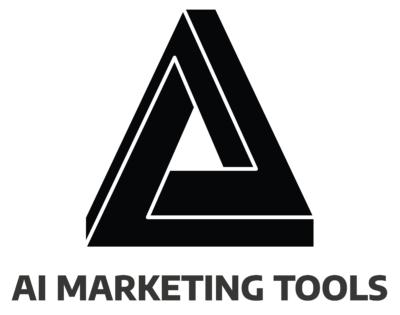
In today’s fast-paced marketing landscape, many businesses struggle to reach the right audience effectively. AI-driven ad targeting offers a solution that surpasses traditional methods. This article will explore the fundamentals of AI-driven ad targeting, highlight its advantages over conventional techniques, and guide readers through creating personalized campaigns. By understanding these aspects, marketers can enhance their advertising efforts and achieve better results, ultimately addressing the challenge of inefficient targeting.
Key Takeaways
- AI-driven ad targeting optimizes campaigns through precise audience segmentation and data analysis
- Automation enhances engagement by delivering personalized messages at the right moment
- Compliance with regulations like GDPR is crucial for effective AI advertising strategies
- Businesses benefit from cost efficiency by using programmatic advertising and predictive analytics
- Continuous improvement of AI strategies is essential for maximizing advertising effectiveness
Understanding the Fundamentals of AI-Driven Ad Targeting

AI-driven ad targeting involves using advanced technology to optimize advertising strategies through data analysis. Businesses can create highly targeted campaigns that resonate with their audience at various touchpoints by leveraging personal data. This subsection will explore how AI capabilities like loyalty programs, visual search, and speech recognition enhance campaign effectiveness, ensuring that ads reach the right consumers with personalized messaging.
Defining AI-Driven Ad Targeting
AI-driven ad targeting is a modern approach that revolutionizes how companies connect with their target audience in the digital advertising landscape. By utilizing automation and sophisticated algorithms, businesses can analyze consumer data to deliver personalized messages that resonate with users at the right time. This targeted strategy enhances engagement and significantly improves the return on investment compared to traditional methods, where ads often reach a broader audience but miss those truly interested in the product or service.
How AI Technology Enhances Advertising Strategies
AI technology significantly enhances advertising strategies by enabling businesses to process data more efficiently and accurately. This capability allows marketers to identify trends and patterns, which is vital for targeting the right consumers at the right time. Moreover, advanced techniques like anomaly detection help monitor campaign performance and ensure compliance with regulation, thus minimizing risks and improving overall effectiveness.
Analyzing the Advantages of AI Over Traditional Ad Targeting Methods

AI-driven ad targeting offers remarkable advantages over traditional methods, including improved accuracy in reaching specific audiences. By analyzing customer data, businesses can achieve cost efficiency and optimize their marketing strategies. Enhanced data processing capabilities allow for better customer engagement through tailored content marketing on social media, ultimately boosting conversion rates.
Improved Accuracy in Targeting With AI
AI-driven ad targeting enhances accuracy by leveraging audience insights derived from user behavior, improving the relevancy of marketing campaigns. With the rise of programmatic advertising, businesses can automate the process of selecting the right audience segments based on real-time data, leading to more effective engagement. Additionally, compliance with regulations like the California Consumer Privacy Act is streamlined, as AI tools can help ensure that data usage aligns with privacy standards while still delivering targeted ads that resonate with consumers.
Cost Efficiency Achieved Through AI Solutions
Cost efficiency is a key advantage of AI-driven solutions in digital marketing, particularly through the use of programmatic advertising and predictive analytics. By analyzing customer behaviors and preferences, businesses can allocate resources more effectively, targeting the right demographics without the bias often present in traditional advertising methods. For example, utilizing predictive analytics allows marketers to make informed decisions about ad placements, ensuring that budgets are spent where they yield the highest return on investment.
- AI utilizes programmatic advertising to enhance targeting precision.
- Predictive analytics supports better resource allocation for campaigns.
- Reduces bias by analyzing real-time data for informed decisions.
- Increases return on investment through smarter targeting strategies.
Enhanced Data Processing Capabilities of AI
AI significantly enhances data processing capabilities, allowing marketing teams to analyze customer behavior in real time. This efficiency enables them to design effective Facebook ads and social media ads that resonate with the audience’s current interests. By incorporating technologies like voice search, businesses can further refine their targeting strategies, making sure they reach the right customers when it matters most.
Creating Highly Personalized Advertising Campaigns Using AI

Machine learning plays a vital role in crafting personalized advertising campaigns, allowing businesses to tailor messages that resonate with consumers on a deeper level. Successful examples illustrate how companies have integrated chatbots and other technologies into their marketing strategies, enhancing efficiency and engagement. This section will delve into the impact of personalization on campaign effectiveness and showcase notable examples of brands that have thrived through targeted approaches.
Role of Machine Learning in Personalization
Machine learning plays a crucial role in personalizing advertising campaigns, allowing businesses to create dynamic ads that resonate with consumers on a deeper level. For instance, companies can use insights from mobile app usage to optimize their landing pages to deliver targeted content that aligns with users’ interests and behaviors. This innovative approach ensures that ads are relevant and timely, increasing engagement and conversion rates significantly.
Examples of Successful Personalized Campaigns
Several brands have successfully leveraged AI-driven advertising tools to create highly personalized campaigns that resonate with their audience. For instance, a prominent retailer in the South utilized customer service data to run an experiment that targeted specific demographics with tailored offers, resulting in a substantial increase in engagement and sales. This strategic use of AI improved their market presence and showcased how effective personalized messaging can significantly enhance advertising outcomes in today’s competitive landscape.
Measuring the Effectiveness of AI-Driven Targeting

Key Performance Indicators (KPIs) play a significant role in evaluating the effectiveness of AI-driven ad targeting compared to traditional methods. This section will compare results related to audience segmentation, highlighting how natural language processing enhances engagement with specific personas. Additionally, insights into product performance in online advertising will showcase the benefits of adopting AI technologies for more targeted campaigns.
Key Performance Indicators for AI Advertising
Key Performance Indicators (KPIs) are essential for assessing the effectiveness of AI-driven advertising strategies. Metrics such as conversion rates, click-through rates, and customer engagement levels provide insights into how well campaigns resonate with target audiences. Advanced techniques like sentiment analysis can gauge consumer reactions and preferences, while deep learning algorithms analyze vast datasets to identify trends and predict demand, ultimately leading to more informed decision-making in search engine marketing.
Using these indicators allows businesses to refine their strategies and reduce potential risks related to fraud, ensuring that their ad budgets yield optimal results.
Comparing Results: AI vs. Traditional Methods
When comparing results, AI-driven ad targeting consistently performs better than traditional methods in key areas like data collection and inventory management. With advanced algorithms, businesses can achieve precise market segmentation, allowing them to tailor their campaigns effectively. For instance, AI enhances search advertising by reducing cost per action, as every dollar spent is strategically aimed at audiences most likely to convert, leading to increased engagement and better return on investment.
Future Trends in AI-Driven Ad Targeting

Innovations are driving the future of advertising, focusing on enhancing contextual advertising and targeted marketing efforts. Expected developments in AI technologies will improve how campaigns capture consumer attention by delivering precise messaging. This section will cover the practical insights of these trends, highlighting their significance in shaping effective business advertising strategies.
Innovations Shaping the Future of Advertising
Innovations in AI-driven ad targeting focus on improving the customer experience through enhanced scalability and efficient big data handling. With advancements like differential privacy, businesses can use large volumes of consumer data while ensuring individual anonymity, which builds trust and allows for more tailored advertising. As a valuable asset, these technologies will enable marketers to create more effective campaigns that resonate with audiences by providing relevant content at the right moments, ultimately outpacing traditional methods.
Expected Developments in AI Technologies
As AI technologies evolve, marketers can expect significant advancements in strategy, particularly in fields like dynamic pricing and copywriting. These developments will enhance the perception of ads by delivering more personalized and contextually relevant content across meta platforms. Businesses can leverage real-time data to adjust campaign tactics swiftly, ensuring marketing efforts resonate better with their target audiences and drive improved results.
Overcoming Challenges in Transitioning to AI-Driven Advertising

Businesses often encounter common obstacles when transitioning to AI-driven advertising, such as understanding algorithms and ensuring compliance with the General Data Protection Regulation (GDPR). Strategies for successful implementation include prioritizing transparency in data usage and leveraging artificial intelligence to boost revenue through targeted campaigns. The following sections will detail these challenges and provide insights for effective adoption of AI technologies in advertising.
Common Obstacles Businesses Face
Many businesses confront significant hurdles when transitioning to AI-driven advertising. Common obstacles include a lack of understanding of complex algorithms and the challenges of ensuring compliance with regulations such as the General Data Protection Regulation (GDPR). Additionally, integrating user experience improvements while maintaining relevance to consumer behavior can be demanding. Educating teams about how to leverage influencer marketing effectively during this transition can play a crucial role in overcoming these challenges:
Strategies for Successful Implementation of AI in Advertising
Implementing AI in advertising requires a strategic approach prioritizing operational efficiency while ensuring data analysis practices comply with consent regulations. Marketers can streamline their targeted advertising efforts by utilizing automated tools for Facebook advertising, which effectively analyze user data to create personalized ad experiences. By adopting a clear framework that addresses potential obstacles, including training teams and integrating AI solutions with existing systems, businesses can fully leverage the advantages of AI-driven advertising.
Conclusion
AI-driven ad targeting significantly surpasses traditional methods by offering improved accuracy, cost efficiency, and personalized messaging. Businesses can effectively analyze consumer data to deliver relevant campaigns that resonate with their target audience, leading to higher engagement and conversion rates. By utilizing advanced technologies, marketers can streamline their strategies for optimal results, ensuring every advertising dollar is well spent. Embracing AI-driven solutions is crucial for businesses aiming to thrive in today’s competitive marketing landscape.

Comments